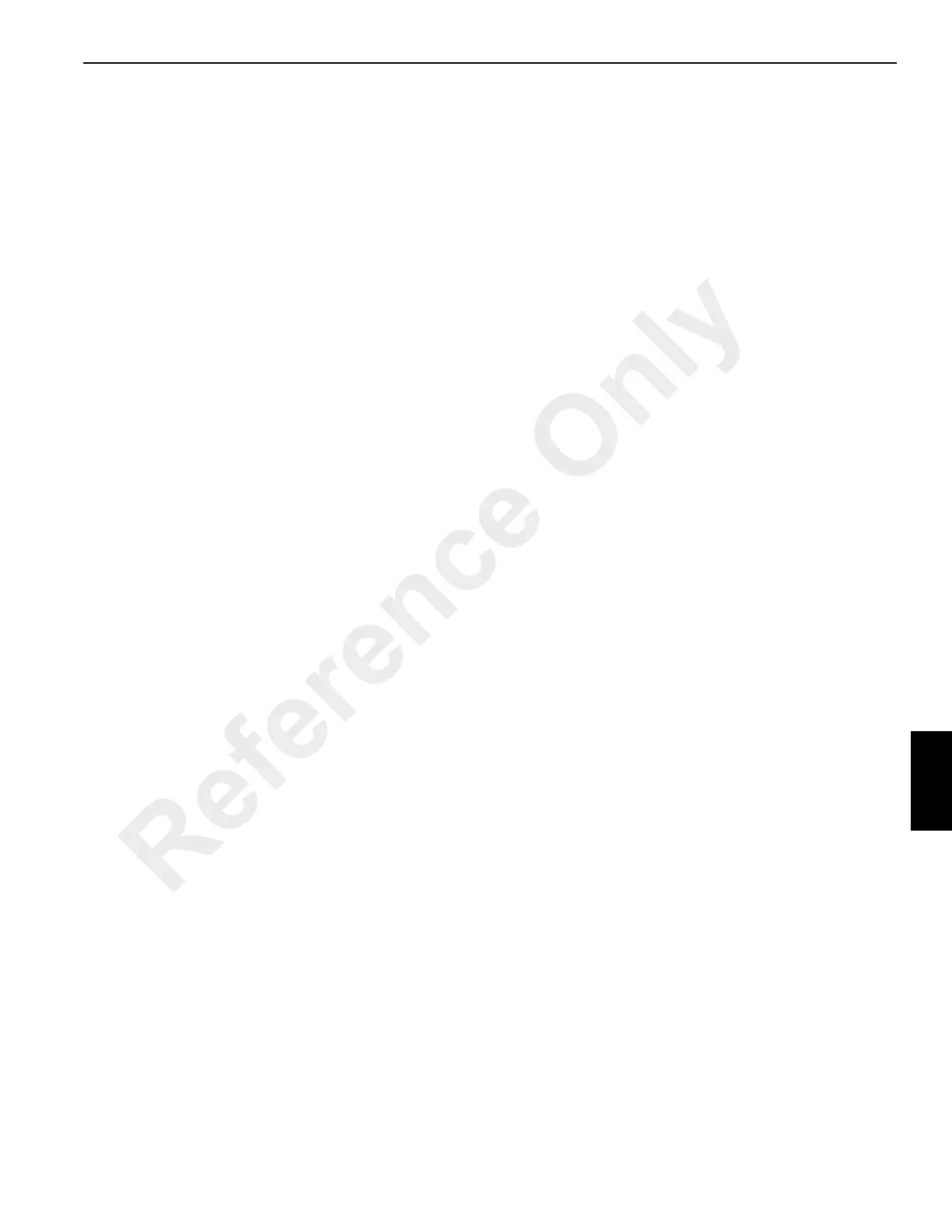Published 4-20-2015, Control # 502-01 7-19
RT540E SERVICE MANUAL POWER TRAIN
head bolts with a torque wrench is essential for
preventing leaks around the head gasket.
Water Pump
The pump should be checked carefully for leaks and proper
lubrication. Replace or rebuild if leaking, cracked, or worn.
Fans and Belts
The fan should be checked for cracked or broken blades.
Refer to Engine Drive Belts, page 7-6.
Thermostat
The thermostat is of the nonadjustable type and is
incorporated in the cooling system for the purpose of
retarding or restricting the circulation of coolant during
engine warm up. Engine overheating and loss of coolant is
sometimes due to an inoperative thermostat. To check for
this condition, remove the thermostat and test by
submerging it in hot water and noting the temperature at
which the thermostat opens and closes. Use an accurate
high temperature thermometer for making this test.
Hoses and Clamps
Hoses and their connections must be checked regularly
because they are often the source of hidden trouble. Hoses
may often times appear in good condition on the outside
while the inside will be partially deteriorated. If there are any
doubts about a hose doing its job, replacement should be
made. The clamps should be inspected to make sure they
are strong enough to hold a tight connection.
Test Equipment
The antifreeze/coolant concentration must be checked using
a refractometer. “Floating ball” type density testers or
hydrometers are not accurate enough for use with heavy
duty diesel cooling systems.
Antifreeze/Coolant
Heavy duty diesel engines require a balanced mixture of
water and antifreeze/coolant. Fill the system with a AFC-50/
50 blended, fully formulated extended life antifreeze/coolant
at all times. Refer to Section 9 - LUBRICATION. Do not use
more than 50 percent antifreeze/coolant in the mixture
unless additional freeze protection is required. Never use
more than 68 percent antifreeze/coolant under any
condition. Antifreeze/coolant at 68 percent provides the
maximum freeze protection; antifreeze/coolant protection
decreases above 68 percent.
Radiator Removal and Installation
Removal
1. Set the outriggers and position the boom to over the
side.
2. Open the drain cock at the end of the hose coming from
the water pump (under the front of engine) and drain the
coolant into a suitable container. Dispose of in
accordance with local and EPA regulations.
3. Tag and disconnect all hoses from the top and bottom
sections of the radiator assembly.
4. Remove the hardware attaching the fan guard to the
shroud. The fan guard will remain with the engine.
5. Remove the hardware securing the support plate on
each side of the radiator.
NOTE: The radiator assembly weighs approximately
44.4 kg (97.9 lb).
6. Attach an adequate lifting device to the radiator
assembly.
7. Remove the hardware securing the radiator to the mount
bracket and remove the radiator assembly from the
carrier.
Reference Only

